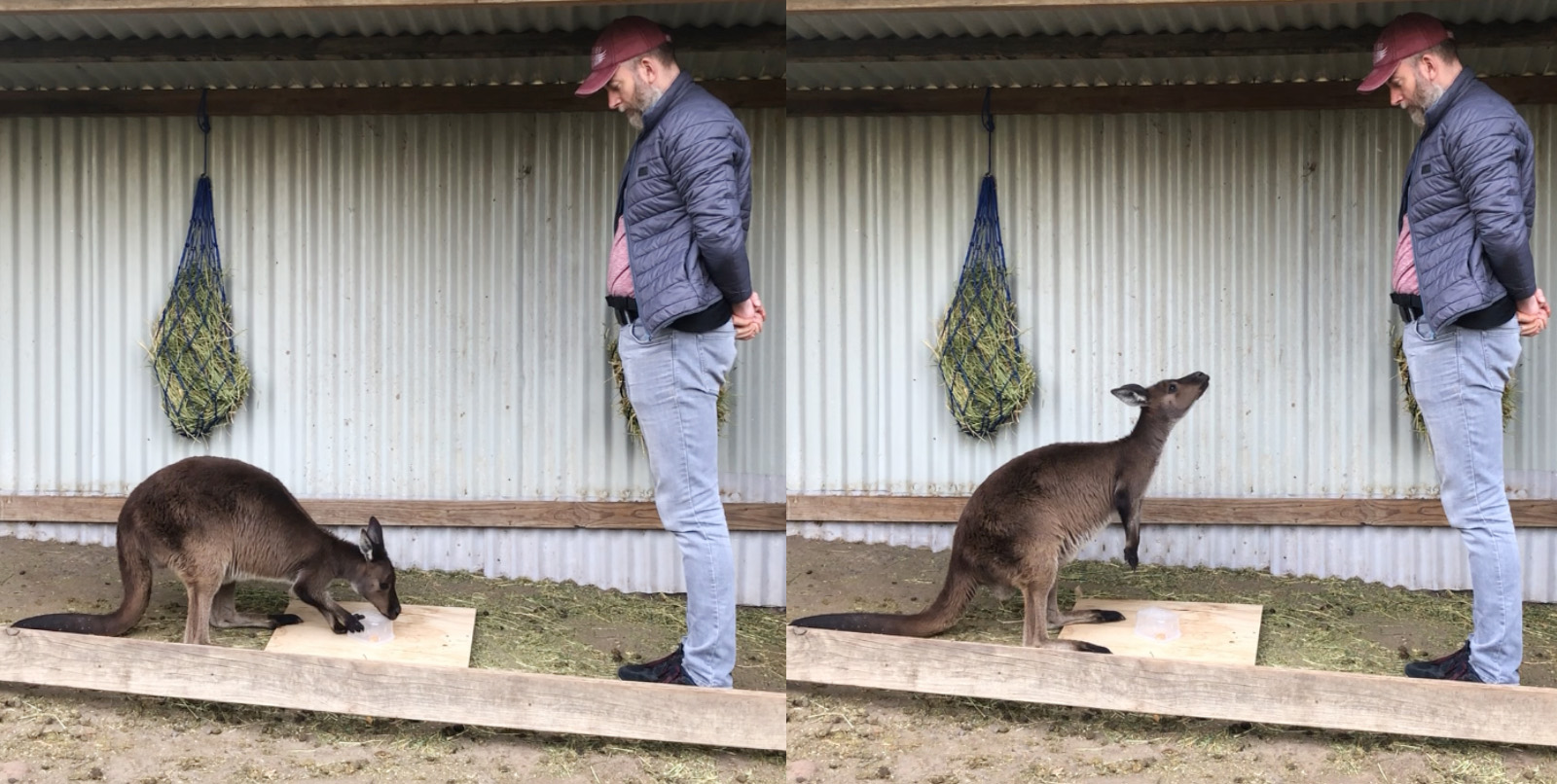CityU researcher: Kangaroos can intentionally communicate with humans

A research team led by a scientist who is now based at City University of Hong Kong (CityU) has discovered that kangaroos, animals that have never been domesticated, can intentionally communicate with humans, challenging the notion that this behaviour is usually restricted to domesticated animals like dogs, horses or goats.
The research is led by Dr Alan McElligott, Associate Professor in Animal Behaviour and Welfare at the Jockey Club College of Veterinary Medicine and Life Sciences at CityU, and in collaboration with the University of Roehampton and the University of Sydney.
Involving kangaroos at three locations across Australia, the project revealed how kangaroos gazed at a human when trying to access food that had been placed in a closed transparent box.
Highly motivated by the food, the kangaroos used their gaze to communicate with the human instead of attempting to open the box themselves, a behaviour that is usually expected of domesticated animals participating in unsolvable tasks.
Gazing and gaze alternation (forms of showing) are often interpreted in a similar manner to the action of pointing by humans and non-human primates, as they may serve to attract the attention of an observer towards an object. This type of communication represents a form of mental planning.
Ten out of 11 kangaroos in the tests actively looked at the person who had put the food in the box in order to access it. In addition, nine of them showed gaze alternations between the box and the person present, a heightened form of communication where they look between the box and human.
“Through this study, we were able to see that communication between animals can be learnt and that the behaviour of gazing at humans to access food is not related to domestication. Indeed, kangaroos showed a very similar pattern of behaviour that we have seen in dogs, horses and even goats when put to the same test,” said Dr McElligott.
The results provide support for the hypothesis that in social species, phylogenetic prerequisites of responsiveness to visual stimuli from conspecifics, are likely to be more important than domestication for exhibiting human-directed behaviours.
“This research shows that the potential for referential intentional communication towards humans by animals has been underestimated, which signals an exciting development in this area. Kangaroos are the first marsupials to be studied in this manner and the positive results should lead to more cognitive research beyond the usual domestic species. Gaining a more comprehensive understanding of the behaviours of a species is key to improving their welfare,” Dr McElligott added.
Future research on kangaroos should examine visual cues and behaviours used for social interactions between conspecifics, for example, head orientation and limb movements, and determine whether similar actions are used when interacting with humans.
Under the leadership of President Way Kuo of CityU, the concept of developing veterinary education in Hong Kong was first envisioned in 2008. Under the concept of One Health, the Jockey Club College of Veterinary Medicine and Life Sciences at CityU has been established. Guided by the core principles of One Health, CityU will continue to pioneer excellence in veterinary education and research in Hong Kong, Asia and the world, spotlighting public health, food safety and animal welfare for the well-being of society.